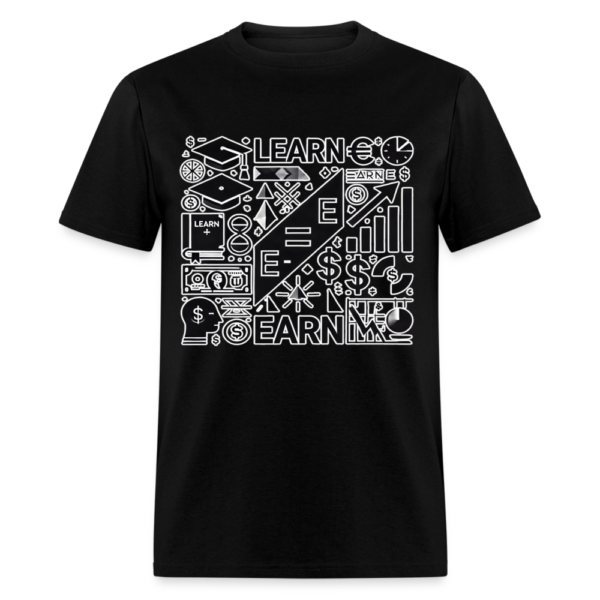
In today’s ever-changing economic landscape, the discussion around taxation is hotter than ever. Many people wonder which system is best for economic growth, fairness, and simplicity: a no income tax model, tariffs, or a sales tax approach. In this post, we’ll dive into each method, break down the pros and cons, and explore how each system affects everyday life. Whether you’re a policymaker, business owner, or curious citizen, this guide will give you a comprehensive look into these tax structures and why the debate continues to make headlines.
Understanding the Tax Options
Tax systems are complex, and each approach has unique benefits and challenges. Here, we outline the three main types:
No Income Tax Model
A no income tax system means that citizens do not pay taxes on their personal earnings. Instead, governments rely on alternative revenue streams to fund public services. This model is most often seen in some states or countries that use other taxes to support budgets. For instance, revenue may come from corporate taxes, tariffs on imported goods, or sales taxes. Advocates of this system say that it encourages higher disposable income, stimulates economic activity, and attracts talent and businesses to the region.
Tariffs
Tariffs are taxes imposed on imported goods. They serve multiple purposes: protecting domestic industries, generating revenue, and sometimes acting as a tool in international trade negotiations. While tariffs can protect local businesses from foreign competition, they can also lead to increased prices for consumers. The debate around tariffs often centers on finding a balance between safeguarding domestic industries and ensuring that consumers are not unfairly burdened with higher costs.
Sales Tax
Sales tax is applied at the point of sale when consumers purchase goods and services. It’s a straightforward approach that is easy to administer and understand. Sales tax has the advantage of being visible to the consumer, making the cost transparent at the time of purchase. However, critics argue that sales tax can be regressive, meaning that it disproportionately affects lower-income individuals who spend a higher percentage of their income on taxed goods.
Comparing the Approaches
Let’s break down these tax systems further by looking at their impacts on the economy, citizens, and businesses.
Economic Impact
No Income Tax:
- Increased Disposable Income: Citizens benefit directly as they keep a larger share of their earnings. This can lead to higher consumer spending and stimulate the economy.
- Attraction of Talent and Investment: Regions without income tax may attract high-skilled workers and innovative businesses, creating a vibrant economic ecosystem.
- Alternative Revenue Sources: The challenge here is ensuring that sufficient revenue is generated through other means, such as tariffs or sales tax. This might require careful planning and may lead to reliance on more volatile sources like commodity taxes.
Tariffs:
- Protection of Domestic Industries: By imposing tariffs on imports, local companies have a competitive advantage, which can lead to the growth of domestic industries.
- Trade Wars: Over-reliance on tariffs can escalate into trade conflicts with other nations, potentially harming global trade relationships and impacting the broader economy.
- Consumer Prices: Tariffs can lead to increased costs for imported goods, which may trickle down to higher prices for everyday items.
Sales Tax:
- Revenue Stability: Sales tax can provide a steady flow of revenue, as it is applied to nearly every transaction.
- Regressive Nature: Since everyone pays the same percentage regardless of income, those with lower earnings may feel a disproportionate burden, which can affect consumer behavior.
- Simplicity and Transparency: Sales taxes are generally easy for consumers to understand, and businesses can easily incorporate them into their pricing models.
Social and Business Considerations
Impact on Citizens:
- In a no income tax system, individuals have more immediate control over their earnings, which can improve savings and investment rates.
- Tariffs might protect jobs in specific industries, but if consumers face higher costs, overall spending could decline, affecting quality of life.
- With sales tax, every purchase contributes to public revenue, but the regressive nature might mean lower-income families end up paying a larger share of their income.
Impact on Businesses:
- Companies might flourish in an environment where employees are attracted by the absence of income tax, leading to a more dynamic workforce.
- Industries that depend on imports might face challenges under high tariff regimes, pushing companies to either find local alternatives or raise prices to offset costs.
- Retailers and service providers need to be mindful of sales tax regulations, which can differ from state to state or country to country, adding an extra layer of administrative responsibility.
Global Perspectives and Recent Trends
As the global economy continues to evolve, different regions experiment with varying tax strategies to optimize growth. Some countries and regions have tried eliminating income tax to boost competitiveness and stimulate local economies. In contrast, others have turned to tariffs as a means of protecting their industries amid rising international competition. Sales tax remains a popular choice in many parts of the world due to its straightforward nature and predictable revenue stream.
In recent years, debates on tax policy have been influenced by a few key trends:
- Globalization and Trade: With global supply chains more interconnected than ever, the impact of tariffs has taken on added significance. Tariff policies not only affect local businesses but also have repercussions on international trade relations.
- Digital Economy: The rise of online shopping has made sales tax a critical issue. Governments are continually adapting to ensure that digital transactions are taxed fairly, leveling the playing field between brick-and-mortar retailers and online giants.
- Income Inequality: The discussion around no income tax models has been partly fueled by concerns over income inequality. Proponents argue that when citizens keep more of their earnings, they can invest in themselves and their communities, potentially reducing inequality over time.
Real-World Examples and Lessons Learned
Looking at regions that have adopted these approaches can provide valuable insights. Some states in the United States, for example, do not levy a state income tax. They have successfully attracted businesses and residents seeking lower personal tax burdens, even though they may compensate with higher sales taxes or other fees. However, this approach is not without its challenges, as the reliance on other forms of taxation can sometimes lead to disparities in service quality and infrastructure investments.
Conversely, countries that rely heavily on tariffs have faced mixed results. While tariffs have helped protect certain domestic industries, they have also led to trade disputes and increased costs for consumers. The challenge is finding a balance where tariffs protect local interests without stifling international trade or burdening consumers excessively.
Sales tax systems are prevalent in many developed countries and regions due to their simplicity and the steady revenue they generate. However, the regressive nature of sales tax means that policymakers must consider measures to alleviate the burden on lower-income groups. This can include exemptions for essential goods or rebates to ensure fairness across all economic segments.
Why the Debate Continues and What It Means for the Future
The conversation around no income tax, tariffs, and sales tax is far from settled. With shifting political landscapes and evolving economic challenges, each system has its own set of advocates and critics. Here are some key points driving the ongoing debate:
- Economic Growth vs. Social Equity: While no income tax systems may spur growth by increasing disposable income, they can also lead to greater reliance on other, potentially more volatile sources of revenue. Tariffs and sales tax bring in steady revenue but may not promote growth as effectively as a no income tax model might.
- Global Competition: In an interconnected global economy, the impact of tariffs can extend well beyond borders, affecting international relations and trade agreements. As countries negotiate trade deals, the balance between protecting domestic industries and fostering global cooperation becomes critical.
- Administrative Efficiency: Sales tax is relatively easy to administer, but variations in tax rates and regulations across different regions can create complexities for businesses operating in multiple areas. A streamlined approach that addresses these challenges could be key to future tax reforms.
Looking ahead, policymakers are likely to explore hybrid models that combine elements from each system to optimize revenue generation while minimizing drawbacks. The goal is to create a tax environment that promotes economic stability, supports social welfare, and remains competitive on a global scale.
Key Takeaways
- No Income Tax: Offers the benefit of increased disposable income and potential attraction of top talent, but requires alternative revenue streams that can sometimes be unstable.
- Tariffs: Protect domestic industries and create revenue, but risk triggering trade disputes and increasing consumer costs.
- Sales Tax: Provides a simple and transparent source of revenue, though its regressive nature can disproportionately affect lower-income individuals.
- Global Trends: As globalization, digital commerce, and income inequality drive change, tax systems must evolve to meet modern challenges.
- Call to Action: Engage in the debate, share your perspective, and let’s work together to build tax policies that benefit everyone.
Conclusion
The debate between no income tax, tariffs, and sales tax is a multifaceted one that touches on economic growth, social equity, and global competitiveness. While each system has its merits and drawbacks, the future likely lies in innovative, hybrid models that capture the strengths of each approach. By understanding the intricacies of these tax methods, we can better appreciate the complexities of public policy and make informed decisions as citizens and consumers.
We hope this comprehensive guide has given you a clearer picture of the tax debate. Your feedback is crucial, so please take a moment to leave a comment and share this post with friends and colleagues who are passionate about economics.
Learn Equals Earn Unisex Classic T-Shirt
Learn Equals Earn Unisex Classic T-Shirt. Empower yourself with the Learn Equals Earn Unisex Classic T-Shirt, a statement tee that highlights the value of knowledge and growth. This classic-fit, comfortable shirt is perfect for everyday wear, spreading a positive message for students, professionals, and lifelong learners. Whether you’re in class, at work, or relaxing, let this tee inspire you and those around you!
------------------------------------------------
We use AI GPT Chatbots to help with our content and may get some things wrong.
-------------------------------------------------








Facebook Comments